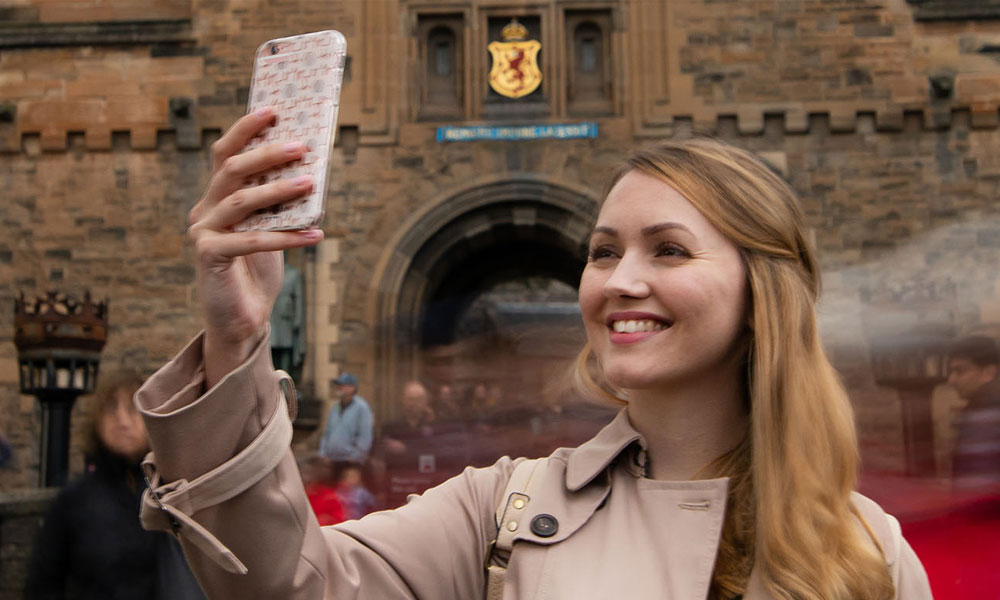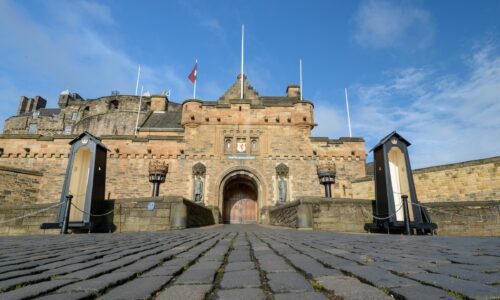
750 years of Robert the Bruce
11 July 2024
Born in Ayrshire on 11 July 1274, Robert the Bruce – or Robert I – is one of the most well-known individuals from Scottish history. Robert the Bruce is celebrated for his victory against England during the First War of Scottish Independence. He is often regarded as a national hero for his success at the Battle of Bannockburn and for securing Scottish independence in the Treaty of Northampton in 1328.
An iconic figure
Bruce is undoubtedly an iconic figure. So much so that it may seem fitting that visitors to Edinburgh Castle are met with a towering bronze figure of Robert the Bruce. His statue stands tall and proud alongside William Wallace at the drawbridge.
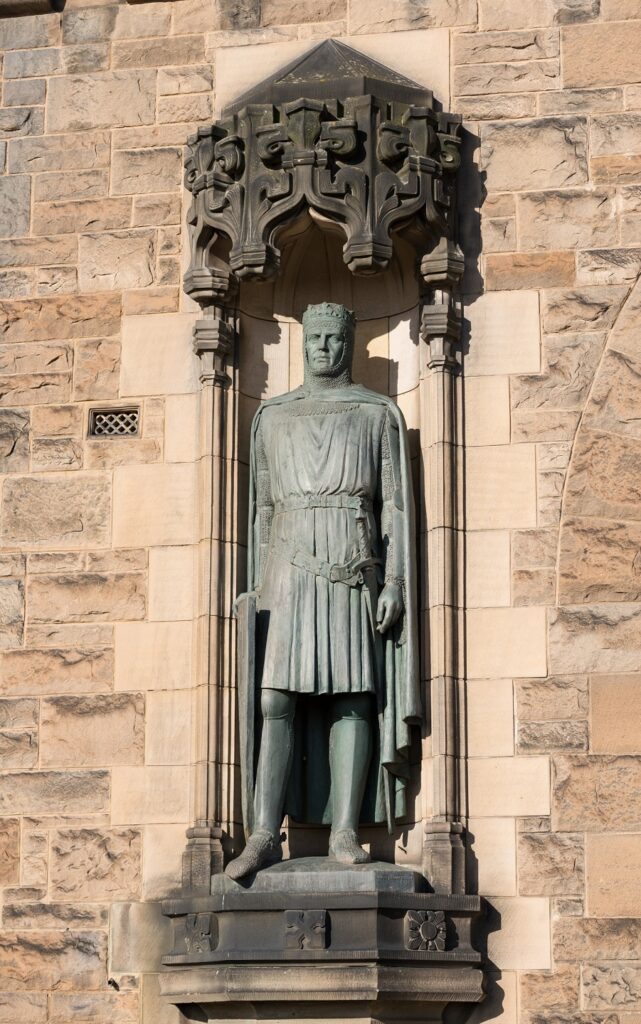
Look out for Robert I on the left as you enter the castle. These statues were added in 1929, marking the 600th anniversary of Bruce’s death
Yet it may be surprising, that Robert’s connections with Edinburgh Castle are remarkably few. In fact, for much of his reign the castle was either held by an English garrison or ruinous.
The Castle at War
As a mighty and symbolic stronghold, Edinburgh Castle was hotly fought over during the Wars of Independence. The castle faced numerous sieges and attacks. And it changed hands between the English and Scots throughout.
One of the most famous stories from Bruce’s reign is the recapture of the castle in 1314 by a small group of Scottish soldiers. The group was led by Bruce’s nephew Thomas Randolph, Earl of Moray. Barbour’s epic poem, ‘The Bruce’ tells of how the Scots bravely reclaimed the castle from the English, under Bruce’s command.
Edinburgh Castle had been held by an English garrison since 1296. But by the Spring of 1314 Bruce was steadily reclaiming castles in the south, his forces gaining strength. By March, Randolph had besieged the castle. Inspired by the recent victory at Roxburgh Castle, he formed a cunning plan to scale the castle defences at night. He wanted to take the garrison by surprise!
Attack in the night
After nightfall on 14 March Randolph and his men set off to scale the north face of Castle Rock. They were guided by William Francis. Francis was the son of a previous Keeper of the castle, who often scaled castle rock at night to meet with his lover in the town.
Barbour’s dramatic account tells of how the men paused in the dark, on a narrow ledge around halfway up castle rock. Guards were heard on the walls above. And one of them threw a stone at imaginary enemies below, unaware of the ambush about to take place.
Once the guards fell quiet again, Randolph and his men – a group of around 20-30 – scaled the castle walls using rope ladders. Despite being heavily outnumbered, they were able to quickly overcome the English guards. The English Constable was defeated, and the rest of the garrison shaken. Randolph’s daring attack succeeded and soon the castle was back in the hands of the Scots.
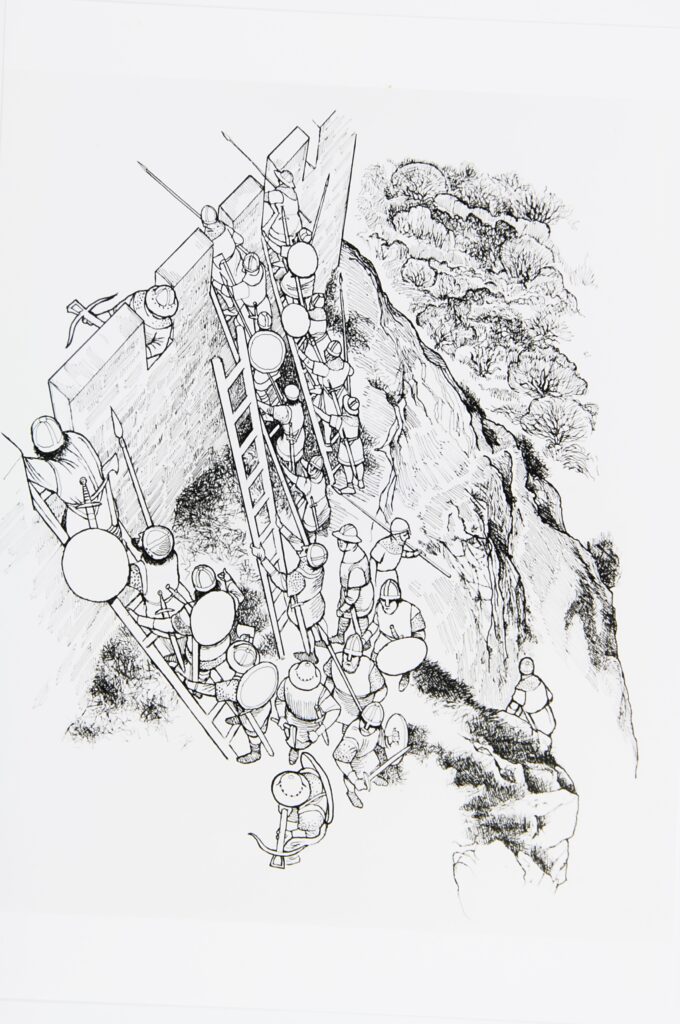
Reconstruction illustration showing Randolph and his men scaling the castle walls
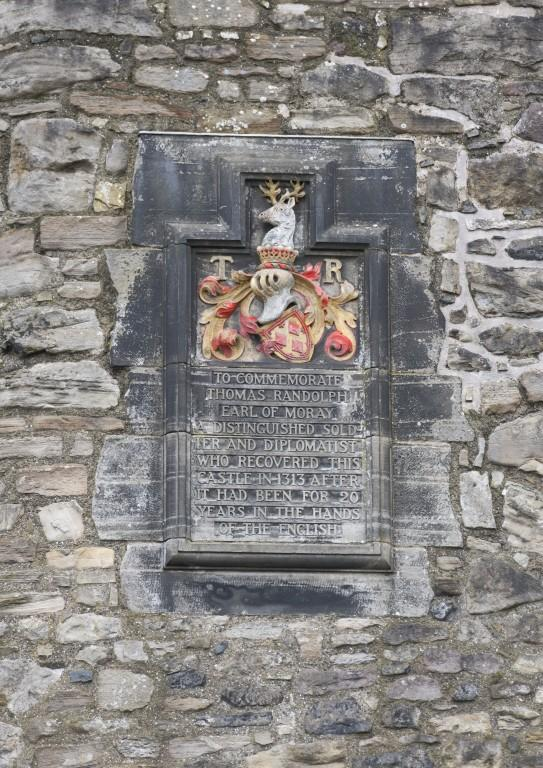
Keep a look out for this plaque at the castle, high up on the castle walls near the Lang Stairs, commemorating the momentous recapture.
Bruce’s destruction
Although Robert was not directly involved in this attack, his orders that followed had a profound impact: the castle’s defences were to be destroyed. This must have been a difficult decision to make, to ensure that this critical stronghold could no longer be used by English forces.
Destruction of the medieval castle was said to have been so complete that only St Margaret’s Chapel was left standing. One particularly striking episode in Second War of Scottish Independence illustrates just how thoroughly the castle’s defences were dismantled.
In 1335, Scottish and English sources tell of how a band of English soldiers under the Count of Namur were forced to take refuge at the castle. The defences were still so ruinous over two decades later, that the soldiers were forced to kill their horses and use their bodies as a barricade.
Despite the castle falling into English hands again during the 1330s, it is clear that they struggled to maintain the defences. English exchequer accounts indicate considerable sums were spent on trying to strengthen the castle again. Bruce’s bold move had paid off.
Bruce’s Legacy
It was only under Bruce’s son, David II in the later 1300s that the castle was fully repaired, with a programme of extensive building works including the impressive David’s Tower.
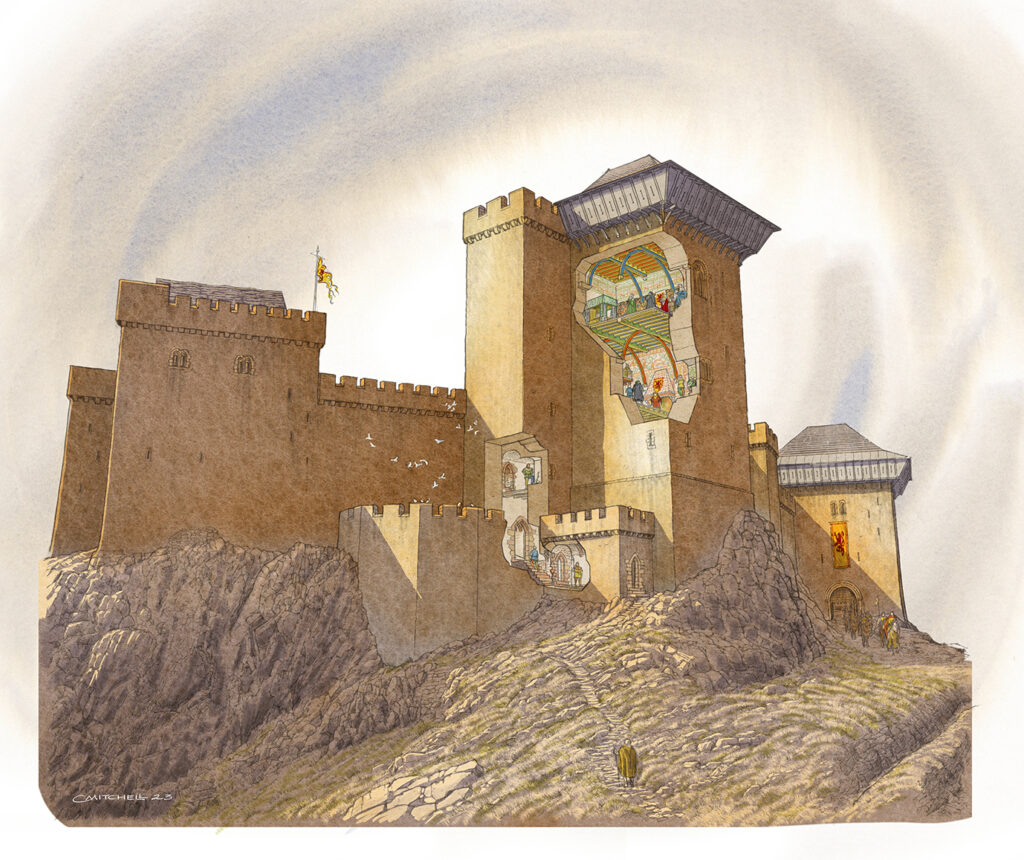
Reconstruction illustration of David’s Tower
Later sources attest to Bruce’s legacy. He was celebrated for his chivalry and military leadership and revered almost as a saint.
An inventory taken at Edinburgh Castle in 1488 records a shirt and sword of Robert the Bruce that were treasured by James III. The shirt seems to have been venerated as a relic. He kept it in a private ‘closet’ or oratory. It was likely a place of daily prayer and reflection set in the royal lodgings of David’s Tower.
James III is said to have carried Bruce’s sword with him as he left Edinburgh Castle for battle in June 1488. He carried the sword to his death on the battlefield at Sauchieburn just days later.
These records and the presence of these relics, held safely within the heart of the castle, attest to Bruce’s exalted reputation generations after his death.
Discover More
Visitors can find out more about Edinburgh Castle during the Wars of Independence at the immersive ‘Fight for the Castle’ exhibition in the Argyle Tower.
Historic Scotland sites across the country are hosting events to celebrate the 750 anniversary of Robert the Bruce’s birth. Find out more on our Bruce 750 page
